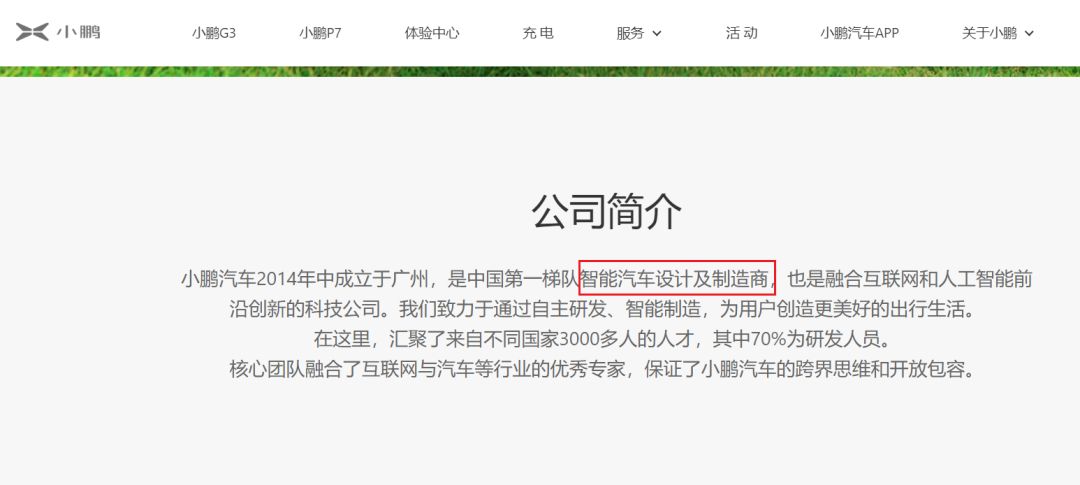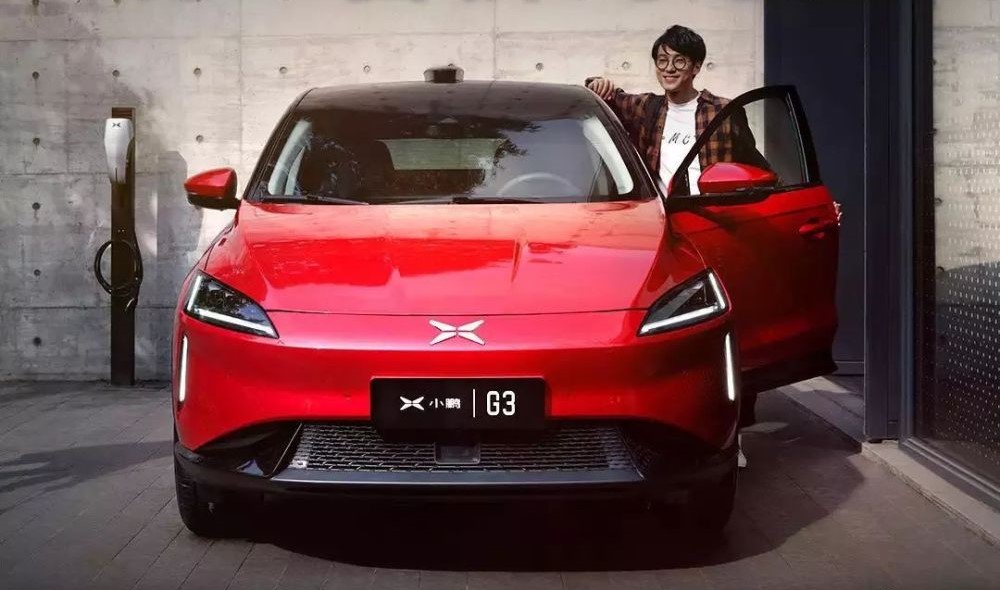New Car Companies Enter the Travel Industry: Can Youpeng Travel Succeed?
On May 13th, the travel service platform “Youpeng Travel” of the new car company XPeng Motors was exposed. The four aspects of electrification, intelligence, interconnection, and sharing have been called out in the automotive industry for many years, making it natural for new car companies representing fresh blood to enter the travel field. So, can “Youpeng Travel” succeed?
New Car Companies Enter the Travel Industry
First of all, XPeng is not the first new car company to enter the travel industry. Before XPeng, let’s take a look at how new car companies have been doing.
WM Motor launched the travel platform Keen early on, but it did not directly enter the online car-hailing and special car market like Geely Caocao or SAIC’s Xiangdao. Instead, it chose to enter the fields of tourism car rental and shared leasing, and the pilot cities were limited to Hainan and Shanghai, without a large-scale rollout.

WM Motor CEO Shen Hui mentioned before that WM had contacts with the major travel platforms in China. Compared with other car companies, WM has some differentiated advantages in entering the travel industry. WM has developed a pure electric platform. When WM develops models for the 2B market segment, it can effectively shorten the cycle, reduce costs, and improve reliability based on the existing platform.
Before XPeng and after WM, Chehejia also entered the travel industry. On March 22, 2018, Chehejia announced the establishment of a joint venture with Didi. The new company was headed by Chen Bing, former CEO of Daimler Intelligent Rental (China) Co., Ltd. and general manager of Chehejia’s travel business.

Chehejia CEO Li Xiang made precise predictions and calculations on the market size and cost structure of the Chinese travel service industry. He believes that designing a customized model for online car-hailing scenarios, while ensuring the basic experience and targeting to control the operating cost per kilometer, has the opportunity to achieve two objectives: improving the user experience and reducing operating costs.
So what about XPeng, the protagonist of this article?
According to “Electric Star”, “Youpeng Travel” has obtained the Guangzhou online car-hailing license and is about to be put into operation. The first batch of vehicles to be put into operation will be XPeng Motors’ first mass-produced model, the XPeng G3.


By this means, we can see the difference between XPeng and the other two. Simply put, XPeng can also provide ride-hailing service, but the difference between XPeng and Chehejia is that XPeng has not designed customized products for travel scenarios, but rather directly launched the XPeng G3 designed for C-end users into B-end operation.
How should we interpret this?
Chehejia’s foray into the ride-hailing market is a continuation of the SEV project obsession that was terminated earlier. Although the SEV project has been discontinued, Chehejia’s thinking on the size of the travel market, cost structure, electric drive platform, operation, and total ownership cost (TCO) has been reborn in a joint venture with Didi. What I want to say is that Chehejia’s entry into the transportation field is supported by an invisible context.
What about WM Motor?
WM Motor has not yet made a significant investment in the travel industry, and at best, can only be considered a tentative attempt. However, if you have been paying attention to WM Motor for a long time, you will know that the management team has always had a strong interest in the B-end market in various public occasions. What I mean is that whether it is Chehejia or WM Motor, their entry into the travel industry should not come as a surprise.

But XPeng is not like that. You cannot find any thoughts from XPeng on travel operations. When you open XPeng’s official website, you will find that it is an “intelligent automobile design and manufacturer,” which is significantly different from WM Motor, a “new energy automobile manufacturer and travel solution provider.”
Why did XPeng enter the online ride-hailing industry?
How was “You Peng Travel” created?
On March 26, the 2019 subsidy policy was released. As we mentioned in a previous article, the degree of subsidy withdrawal was beyond everyone’s imagination. Except for Chehejia, which relied on extended-range electric vehicles without subsidies, all new car-making enterprises began to face mounting pressure.
The more accessible the product positioning, the greater the pressure on the enterprise. For a car priced at 500,000 yuan, the subsidy withdrawal will cause an average price increase of 40,000 yuan, an increase of 8%. For a car priced at 150,000 yuan, the price increase will be 40,000 yuan, a 27% increase.
It was not optimistic for XPeng G3, which is priced between 150,000 and 200,000 yuan, in the market situation of 2019.
However, as early as February 1, XPeng completed price adjustments a step ahead of the new policy. The national uniform price of the XPeng G3 was adjusted to 155,800, 177,800 and 199,800 yuan, which increased by 20,000, 28,000, and 34,000 yuan respectively compared to the prices announced at the debut of the car, which were 135,800, 149,800 and 165,800 yuan.
The difficulties faced by XPeng are no different from those of Tesla, which has had consecutive price cuts due to the failure to meet demand. However, the difference between the two is that Tesla has the operating space to increase sales by continuously lowering prices, thanks to its unique product strength and higher gross margin, while XPeng G3, as XPeng’s first mass-produced model, faces much greater operational difficulty.
But XPeng’s path is not blocked either, and entering the travel field from the C-end to the B-end is a natural solution.
Now let’s analyze the importance of “Youpeng Travel” to XPeng.
Firstly, it solves the urgent need to increase the current sales of XPeng G3, which is the most important point.
Secondly, the good aspect of “self-use” is that brand building will not be affected by the delivery of the first product. As early as May 2018, XPeng G3 held a delivery ceremony for its G3 1.0 model with a scale of several hundred units, which was even faster than NIO, which is known for its fast delivery. Hmm, all these hundreds of G3s were delivered to internal staff.
Now that XPeng G3 is put into operation at “Youpeng Travel”, it means that XPeng will receive feedback on the many small issues and problems related to its first model caused by its lack of car-making experience through the company’s internal channels and make improvements. This will prevent widespread fermentation on social media, which would have a serious negative impact on brand building.
On the contrary, for a new force with small voice, XPeng G3 with a forward-looking design (relative to traditional gasoline-powered cars) running on the road and a center console large screen that is similar to Tesla’s will be a mobile advertising board for XPeng, helping it reach a wider audience. This brand operation method has a higher cost performance ratio than any advertising investment because it has zero cost.
Third, the accumulation of operation experience? Why put a question mark here? There is still a lot of uncertainty about this. We need to ask a question first: Is XPeng serious about doing the travel business?
According to the monitoring data of Hui Ju Yun platform radar, XPeng applied for the “You Peng Outing” trademark intensively on December 10, 2018. Along with it, there were also trademarks such as “Shen Diao Special Car” and “Shen Diao Outing”. Considering that the industry has long expected the decline of subsidies for new energy, XPeng’s registration of trademarks at this node does not seem to be a long-term plan, but more like a precautionary measure.
If we look at it this way, the accumulation of operational experience of “You Peng Outing” is not a topic worth discussing. Facing strong opponents such as Didi + Che and Jia, how much determination XPeng has brought G3 into the online car-hailing market, and whether to fight or not, is a problem.
If XPeng insists on doing transportation, and there will be truly customized 2B models of G3 put into operation under “You Peng Outing”, then the launch of G3 this time is a good start for XPeng to deepen his understanding of online car-hailing operations, small-scale fleet management, and cost control.
Finally, the iteration of XPilot. We have previously mentioned that in XPeng’s next-generation XPilot 3.0, XPeng has shown great ambition and is committed to independently establishing perceptual capabilities. This puts very high demands on algorithm research and development, rapid training, and iteration.
Every XPeng G3 running on the road is equipped with XPilot hardware as standard. In the face of Tesla Autopilot that collects massive real-life road condition data in shadow mode to train deep neural networks and continuously improve Autopilot algorithms, He XPeng, who comes from the Internet, sees it very clearly.
On the same day when the subsidy new policy of March 26, 2019 was announced, He XPeng announced that XPeng Motors will complete the delivery of 10,000 G3 models before the end of July this year, and deliver 40,000 units throughout the year. At that time, we were full of doubts about this Elon Musk-style sales guidance. With “You Peng Outing”, everything became reasonable.
Seeing this, do you think that the C-end to B-end transformation of G3 is XPeng’s expedient measure during a special period, and XPeng has no intention to layout online car-hailing?
 The intriguing fact is that Guangzhou XPeng Motors Technology Co., Ltd, the parent company of Xpeng Motors, was registered on June 5th, 2018, way before NIO had delivered only ten ES8s, and most of the other new carmakers had not even started delivery. It seems illogical that XPeng anticipated the 2019 sales trend and strategy so early.
The intriguing fact is that Guangzhou XPeng Motors Technology Co., Ltd, the parent company of Xpeng Motors, was registered on June 5th, 2018, way before NIO had delivered only ten ES8s, and most of the other new carmakers had not even started delivery. It seems illogical that XPeng anticipated the 2019 sales trend and strategy so early.
Let’s talk about XPeng G3. After He XPeng joined XPeng Motors, the beta version of G3 was already offline, and this car went through two iterations, 1.0 version and the final production version, in a short period relative to the automotive industry’s model update cycle. On April 16th, XPeng P7 was officially launched at Shanghai Auto Show, and it was a significant enhancement concerning design, performance, intelligence, and even brand naming, compared to G3. How do XPeng defines G3 internally?
“XPeng Motors” is significant to XPeng; can “XPeng Motors” be successful? It is difficult at the moment concerning the operating model of G3. Will He XPeng fight for the travel industry? Don’t worry; let’s wait and see.
42 Garage is recruiting 1-2 automotive internship editors in Shanghai’s Xuhui District. If interested, please send your resume and past works to email d@42how.com.

- Will XPeng’s core competitiveness be XPilot?* He XPeng: Invest a little crazier and work a little harder when everyone else is shrinking


This article is a translation by ChatGPT of a Chinese report from 42HOW. If you have any questions about it, please email bd@42how.com.
